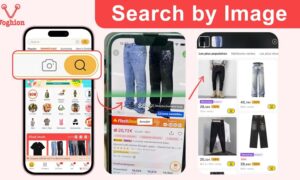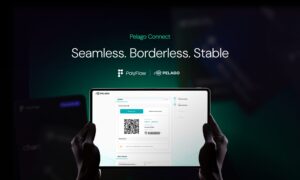The eCommerce industry is constantly evolving. Customer satisfaction, brand awareness, and sales process efficiency are essential for an eCommerce business. Hence, retailers are always hunting for innovative ways like VR for eCommerce to improve these aspects and stay ahead of the competition.
Virtual reality (VR) is becoming increasingly crucial to the success of online businesses. Virtual reality is transforming the eCommerce industry and changing how the business functions. eCommerce businesses are making an impressive impact through marketing VR options such as shoppable Instagram Shop and Facebook Shop.
As an eCommerce merchant, it’s essential to create a lasting impression by providing a novel experience to customers. With VR, you can positively impact customer engagement, conversion, and retention by offering interactive experiences that pique your audience’s interest and keep them coming back.
Virtual reality is an emerging technology that is taking off in a big way, and if you are an online seller, it should be a serious consideration to add it to your suite of marketing tools. By integrating Virtual reality with eCommerce stores, merchants can provide a highly satisfying, connective, and natural shopping experience to the customers.
What is virtual reality?
Virtual reality (VR) is a 3D projection that uses cutting-edge computer technology to create an environment that remotely mimics real-life experience.
VR is a technology that enables its users to feel like they are in the virtual environment and have experiences that emulate real-life scenarios. VR users can put on the headset to enter a virtual environment and sometimes also use gloves to feel and move items around in the virtual environment.
How does VR impact eCommerce?
Virtual reality for eCommerce is primarily about creating an engaging visual environment for consumers. Virtual reality bridges the gap between physical and online stores. It includes 360-degree photos or videos of products.
By offering VR options to potential customers, eCommerce merchants provide a virtual in-person shopping experience to customers digitally. The next best thing to being physically in-store, but with the convenience of experiencing it all from the comforts of home.
How online merchants can use VR?
eCommerce and VR are interrelated. They both are real-life digital experiences. eCommerce merchants are already offering a remote version of a traditional shopping experience, so it’s not hard to see how VR is a natural extension that can significantly benefit their marketing success.
Many eCommerce retailers have already started using VR as a part of their marketing strategy. In the highly competitive world of retail, providing an excellent shopping experience is vital.
VR bridges the gap between remote and in-person retail experiences, allowing e-commerce businesses to provide a unique and exciting experience for customers that will have them coming back for more and making recommendations to their friends, family, and colleagues.
From a potential customer’s perspective, consider what is more satisfying as a shopping experience reading a product description of a dress and looking at a static photo, or virtually trying the dress on in various colors?
By allowing customers to shop from home similarly to shopping in a physical store, VR is fast becoming a game-changer.
eCommerce merchants who have invested in the technology are leading the charge in innovative marketing techniques that command consumers’ attention. Any that remain hesitant risk significantly limiting the growth of their online enterprise.
The advantages of VR for eCommerce
Here are some notable benefits that VR can bring to your eCommerce business:
- VR enriches the customer experience and is highly engaging and memorable. Offering VR experiences can significantly increase your store conversion rates.
- VR for online stores is highly effective on social media. VR provides a unique and memorable user experience that users will discuss, rave about and share via social media, creating a buzz that can catapult your brand awareness.
- VR supports 360-degree product views. Customers can view a product from every angle. It is equivalent to physically holding a product. Customers get a much better perspective of what they are buying and are more likely to make a purchase.
- Visuals are much better than words when quickly demonstrating a product to people who speak different languages. Visuals are often more effective than words regardless of language barriers, and VR creates the ultimate visual experience.
How businesses can get the most out of VR?
VR is a powerful tool for successfully boosting your marketing strategy. We will discuss how you can use virtual reality for your business and offer a virtual shopping experience to your customers. Here are the ways to get the most out of VR for your eCommerce business.
1. Narrate a product’s story
In the market, there might be hundreds of products like yours. So how do you make your product stand out? One effective way is to tell the story behind your product.
You can differentiate your product from others in the same space by doing this. Instead of simply selling your product at face value, create an appealing story of your product and showcase it to potential customers.
Narrating a product story creates a connection between your product and your target audience. Storytelling connects people and therefore helps to increase your conversion rates. VR is an excellent tool for storytelling.
Take customers on the journey of your manufacturing area. You can show how your products are made, what tools you use for your products, etc. The customers can experience all this instead of just reading about it.
2. Improve customer service
Customers are more likely to do business with a brand that resolves issues satisfactorily. If consumers trust that you will fix an issue quickly and respectfully, they will be more inclined to do repeat business with you.
Receiving complaint calls is an opportunity for brands to respond efficiently and effectively to prove trustworthy. For support staff, it is essential to practice troubleshooting a customer’s complaints to solve them satisfactorily.
If the customer is having difficulty describing the issue, it can be challenging for the support staff to determine its core. This can result in the customer being unsatisfied as the problem takes longer to be solved, and the business then suffers by failing to maintain the customer’s trust in them.
Support staff can utilize the 360-degree view technology provided by VR to understand the problem better. A staff member can also show the customers what they are doing to resolve the issue.
Issues can be resolved with more ease while also providing a learning opportunity for customers to help them resolve future issues.
3. Product testing
Customers always want to test before they buy. 360-degree view allows the customers to view products from every angle and perspective.
360-degree views narrow the gap between physical and online stores. Many online retailers have started using VR to allow customers to try products virtually instead of waiting for the sample to arrive.
VR makes it easier for potential customers to decide to buy products online. Along with user experience, it increases your store’s conversion rates by reducing the chances of receiving returns and having to issue refunds.
This technology also opens up the possibility of up-selling, cross-selling, and tracking customer movements in your store. Online merchants can leverage insights into customers’ behavior and choices through virtual tours of their stores.
4. Improve responses to live events
Getting people to attend your live events can be tricky. There are many reasons that people cannot attend a live event physically, such as distance to travel or other commitments.
If people cannot be physically present at your event, you can bring your event to them through VR. As a result, this will help you reach an audience that can’t be there physically. Moreover, everyone gets a front seat at your event from the comfort of their own homes.
Virtual events can decrease costs and increase the number of audiences. Planning a virtual event also eliminates all the expenses related to conducting an event in person. Additionally, since the coronavirus pandemic, virtual events have been more popular than ever.
Summing up
Virtual reality is a growing technology that assists customers to shop in much the same way they would in a traditional brick-and-mortar store. Brands that leverage VR for their stores can create an enhanced customer experience of their store.
The success of an eCommerce store is greatly enhanced with applications. Consumers use their mobile phones for everything these days, so a mobile app for eCommerce stores is necessary.
eCommerce stores need to continuously look for ways to modernize their store to support growth and ensure survival. Despite the capabilities of VR, not many eCommerce stores have started using it for their online stores.



































